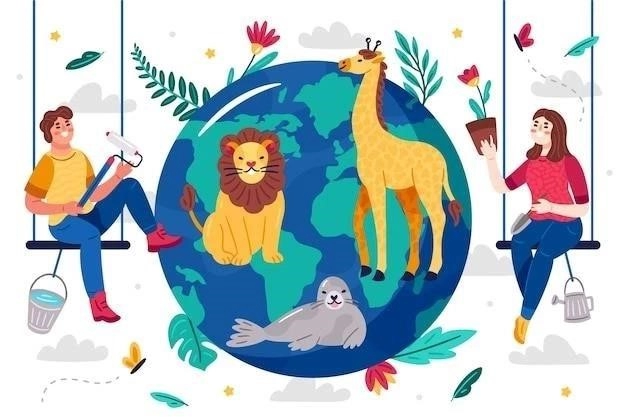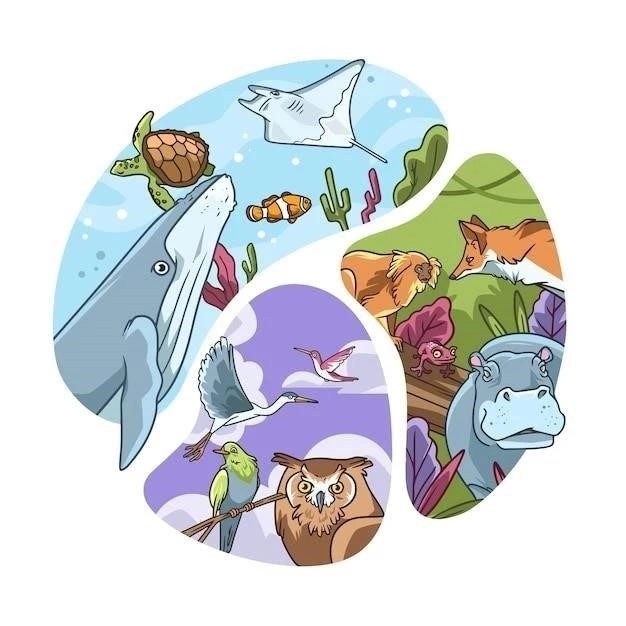As an avid nature enthusiast, Ive been lucky enough to witness firsthand the incredible ways animals adapt to their environments. From the scorching deserts to the lush rainforests, every corner of our planet is teeming with creatures that have evolved unique and fascinating ways to survive.
A Trip to the Desert⁚ Meeting the Resilient Camels
I remember my trip to the Sahara Desert a few years ago. The heat was almost unbearable, and I wondered how anything could survive in such harsh conditions. Thats when I met the camels. These incredible creatures have adapted to the desert in ways I found astounding.
I learned that camels can go for days without water, thanks to their ability to store large amounts of it in their humps. Their wide feet help them navigate the sandy terrain, and their long eyelashes protect their eyes from the blowing sand. It was amazing to see how every aspect of their physiology seemed perfectly designed for life in the desert.
The Arctic Tundra⁚ Home of the Well-Insulated Polar Bear
My journey to the Arctic was a stark contrast to the desert. The icy landscapes were breathtaking, but the freezing temperatures were a challenge. Yet, I was amazed by the polar bears that thrived in this environment.
Their thick fur coats and layer of blubber provide incredible insulation against the cold. I watched as they effortlessly moved across the ice, their large paws acting like snowshoes. Seeing these majestic creatures in their element made me appreciate the power of adaptation.

The Importance of Understanding Adaptation
These personal experiences have taught me that adaptation is not just a scientific concept; its a testament to the resilience and diversity of life on Earth. By understanding how animals adapt, we gain a deeper appreciation for the natural world and the importance of protecting it.
As humans continue to impact the environment, its more important than ever to recognize the challenges animals face. Climate change, habitat loss, and pollution are all threats to the delicate balance of nature. By learning about animal adaptation, we can become better stewards of the planet and help ensure the survival of these incredible creatures for generations to come.
Backyard Wonders⁚ Observing Adaptation Closer to Home
You dont have to travel to exotic locations to witness the wonders of adaptation. My own backyard has become a living laboratory of sorts. Ive spent countless hours observing the creatures that share my space, and Im constantly amazed by their ingenuity.
Take, for instance, the squirrels that constantly raid my bird feeders. I tried everything to deter them – slippery poles, caged feeders, you name it. But those squirrels are persistent! I watched as they learned to navigate every obstacle I put in their path. They even figured out how to shimmy upside down on the hanging baffles. I had to hand it to them; their agility and problem-solving skills were impressive.
Then there are the hummingbirds that visit my nectar feeders. These tiny creatures are like feathered helicopters, hovering mid-air and changing direction with incredible speed and precision. Ive spent hours mesmerized by their aerial acrobatics. Their long, slender beaks are perfectly adapted for extracting nectar from even the deepest flowers. Its a beautiful example of how form follows function in the natural world.

A Call to Action⁚ Protecting Our Fellow Earthlings
My encounters with animals, both near and far, have instilled in me a deep sense of wonder and a responsibility to protect our planets biodiversity. These creatures, with their incredible adaptations, remind me that we are all connected in the web of life.
I believe its our duty to learn about the challenges animals face, from habitat loss to climate change, and to take action to mitigate these threats. Whether its supporting conservation organizations, reducing our carbon footprint, or simply being more mindful of our impact on the environment, every little bit helps. Lets work together to ensure that future generations can experience the same awe and wonder that I have felt while observing the incredible adaptability of the animal kingdom.
One summer, I decided to create a small wildlife pond in my backyard. I had this idea that it would attract all sorts of interesting creatures, and I wasnt disappointed! It wasnt long before dragonflies with their iridescent wings were flitting about, their larvae – fierce little hunters – lurking beneath the waters surface. I even spotted a few frogs taking up residence, their camouflage blending perfectly with the lily pads I had placed there.
Watching the pond transform into a miniature ecosystem right before my eyes was incredible. I saw how each creature, no matter how small, played a vital role. The frogs kept the mosquito population in check (a definite bonus!), while the dragonflies helped control other insect populations. It was a delicate balance, and it made me realize just how interconnected everything in nature truly is.
My experiences have shown me that you dont need to be a scientist or travel to far-off lands to appreciate the wonders of the natural world. Just step outside, observe, and be curious. Youll be amazed by what you discover, even in your own backyard. And when you connect with nature on a personal level, youll be more likely to want to protect it. After all, were all part of this amazing planet, humans and animals alike, and its our responsibility to share it responsibly.
My fascination with adaptation extended beyond my backyard. I became an avid birdwatcher, drawn in by their incredible variety and ability to thrive in diverse habitats. I remember spending a weekend at a coastal nature reserve, binoculars in hand, eager to spot some shorebirds.
The mudflats, exposed at low tide, were teeming with activity. I watched in awe as sandpipers scurried along the waters edge, their short legs moving with lightning speed as they pecked for tiny invertebrates. Their beaks, I noticed, varied in length and shape, each perfectly adapted for probing different depths and textures of the mud. It was like watching a team of specialized avian engineers at work.
Later that day, I spotted a group of pelicans soaring effortlessly overhead. Their huge wingspans, easily six feet across, allowed them to ride the air currents with minimal effort. I watched as they circled above a school of fish, then suddenly, in unison, they folded their wings and plunged headfirst into the water. It was a spectacular display of power and precision, and it highlighted how these birds have evolved to become masters of both air and water.
These experiences, observing the subtle and not-so-subtle adaptations of animals in their natural habitats, have stayed with me. Theyve fueled my passion for learning more about the natural world and have inspired me to share that passion with others. I believe that by fostering a sense of wonder and appreciation for the incredible diversity of life on Earth, we can inspire a new generation of conservationists who will work to protect our planets precious biodiversity.
My fascination with animal adaptations wasnt limited to birds. One spring, I decided to volunteer with a local wildlife rehabilitation center. I had always loved turtles, so I was thrilled to be assigned to help care for a group of injured box turtles that were being nursed back to health.
One turtle, whom the staff had nicknamed Shelley, had a particularly severe injury. Her shell had been cracked, most likely from a car, and it was going to be a long road to recovery. I spent hours each week cleaning Shelleys wounds, monitoring her progress, and making sure she had plenty of fresh water and her favorite foods (dandelions and earthworms, in case youre wondering!).
As I cared for Shelley, I learned firsthand about the amazing regenerative abilities of these ancient reptiles. Over time, I watched in amazement as her fractured shell slowly began to knit itself back together. It was a testament to the power of natures healing abilities, and it deepened my respect for the resilience of these often-overlooked creatures.
Working at the rehabilitation center also opened my eyes to the devastating impact humans can have on wildlife. Many of the animals in our care had been injured as a result of human activities—car collisions, habitat destruction, even encounters with pets. It was a sobering reminder that our actions have consequences, and that we have a responsibility to coexist peacefully with our wild neighbors.











This article sparked my curiosity about animal adaptations. I\
This article is a great example of how science can be both fascinating and accessible. I\
I found the comparison between the camel and the polar bear to be particularly effective. It highlighted the diversity of adaptations and the challenges faced by animals in different environments.
I found the description of the camel\
I found the information about the polar bear\
This article is a great starting point for anyone interested in learning more about animal adaptations. It provides a clear and concise overview of the topic.
The comparison between the desert and the Arctic was a great way to highlight the diversity of adaptations. It\
The author\
This article is a great reminder that we still have so much to learn from nature. The adaptations of animals offer valuable insights into problem-solving and resilience.
As a lover of nature documentaries, I found this article incredibly engaging. The firsthand accounts of animal adaptations brought the concepts to life in a way that textbooks never could.
I found the author\
This article is a great reminder of the interconnectedness of all living things. The adaptations of animals are a testament to the power of evolution.
This article is a great example of how science writing can be both informative and engaging. I learned a lot about animal adaptations while also being entertained.